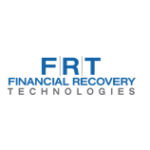The Australian Securities Class Action Landscape: Life without Common Fund Orders
The Australia High Court’s recent decision eliminating the power of lower courts to make common fund orders has proponents on both sides of the class action debate making dire predictions. Case organisers (law firms and funders) portend a return to earlier days when class actions were regularly filed on a closed (opt-in) class basis and are pressing investors to quickly register in their new matters or risk being shut out. On the other side, critics decry the probable legalisation of attorney contingency fees and predict a scourge of baseless suits in its wake.
The reality isn’t so dire. For now, we won’t see common fund orders. However, judges don’t like losing case management tools so alternatives may be found in other laws or court rules. Courts can still enter equalisation orders after recoveries are achieved. Lawmakers may pass legislation restoring common fund orders. Time will tell. In the meantime, in Victoria, we may see legislation in March permitting lawyers to represent clients on a contingent basis, minimising or eliminating the need for third party funding in its current form.
Stripped of the rhetoric, here’s what institutional investors will likely see in the short and long terms.
NEAR TERM
We’re seeing several trends. Courts are not disturbing common fund orders already in place. For filed cases that do not have common fund orders, and for new matters, organisers are putting greater emphasis on book-building to ensure enough investor interest for economic viability. As a result, they’re pressing institutions to register early. Some new class actions are planned on a closed basis. Others will be filed open, particularly if the funder has sufficient investor interest committed early to make the case financially viable or close to it.
For closed classes, while nothing is guaranteed, counsels are generally motivated to open them later to permit additional registrants, particularly those with large losses. This can occur before they approach the defendants about potential settlement if their existing group isn’t large enough to convince them that a potential resolution will buy complete peace and not leave significant investors waiting in the wings.
LONG TERM
Over the long term, things will likely return to where they were before the High Court decision. Litigation costs money. If investors insist on being represented on a no-win no-fee basis, with all costs advanced, the money has to come from somewhere else. It also must earn a return sufficient to justify the time to resolution and risk of litigation failure. Right now, that risk and return is on the funder, who is financing investors directly by means of a funding agreement. Past successes have attracted more capital sources, including US law firms, and over time the increased competition has lowered commission rates from high double digits to high single digits.
If contingency fees are now allowed, the capital source will still require a return for time and risk, but it will shift from funders to the lawyers. In the short term, the new source of funding – lawyers – will put further pressure on commission rates. Longer-term, funders will likely shift gears, setting up local law firms or financing lawyers directly rather than through the investor groups.
From the investors’ perspective, things should still look the same in the long run. They will still be represented on a no-win, no-fee basis, with all costs advanced, and the process will return to something similar to the pre-High Court decision landscape without up-front registrations and with a back-end process resembling an administration.
Subscribe to FRT’s Monthly Newsletter
Financial Recovery Technologies’ Shareholder Litigation Fast Five provides you with the top news in shareholder class actions. This is your exclusive summary of the latest industry developments related to settled, group and antitrust actions and recovery opportunities. Click here to subscribe.
Learn More
To learn more about how FRT can help your firm maximize recoveries in shareholder class action settlements, contact us at learnmore@frtservices.com.
- Recent News
- Blogs
- Whitepapers:
- Jurisdiction Risk Profile:
About FRT
SETTLED CLAIMS I PASSIVE GROUP I ANTITRUST I FUTURE CLAIMS I OPT-IN MONITORING I OPT-OUT MONITORING
Founded in 2008, Financial Recovery Technologies (FRT) is the leading technology-based services firm that helps the investment community identify eligibility, file claims and collect funds made available in securities and other class action settlements. Offering the most comprehensive range of claim filing and monitoring services available, we provide best-in-class eligibility analysis, disbursement auditing and client reporting, and deliver the highest level of accuracy, accountability, and transparency available. For more information, go to www.frtservices.com.
- Follow us on Twitter: @FRTServices
- Follow us on LinkedIn Financial Recovery Technologies
- Email us: learnmore@frtservices.com
This communication and the content found by following any link herein are being provided to you by Financial Recovery Technologies (FRT) for informational purposes only and do not constitute advice. All material presented herein is believed to be reliable but FRT makes no representation or warranty with respect to this communication or such content and expressly disclaims any implied warranty under law. Opinions expressed in this communication may change without prior notice. Firms should always seek legal and financial advice specific to their unique situation and objectives.





